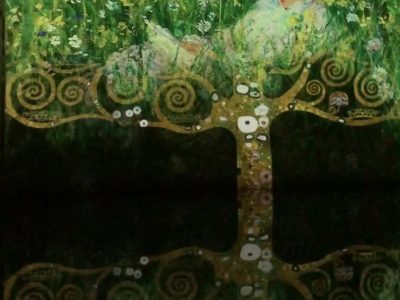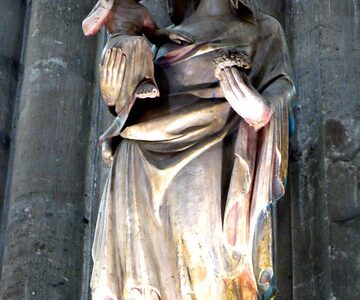
Roof terrace of the Grand Theatre, Bordeaux

I was lucky enough to be taken on a behind the scenes visit of the Grand Theatre, Bordeaux. The building dominates one of the main squares of the town. From below you can see these statues of the nine muses and of the goddesses, Juno, Minerva and Venus.
The view of the Grand Theatre most people see shows the twelve statues above impressive columns.
On 7th April 1780 the Grand Theatre opened with Racine’s Athalie and Blincourt’s Jugement d’Apollon. The theatre became a centre for culture but was also a meeting place.
The theatre architect, Victor Louis
When you go inside the entrance lobby has a marble statue of Victor Louis sculpted by Amédée Juandot in 1880 as part of the theatre centenary celebrations.
Victor Louis was not present at the opening of the theatre, nor was he mentioned in the unveiling ceremony. The man who gave Bordeaux one of its most prestigious monuments was thought at the time to have been crowbarred in by his patrons, the Duc de Richelieu and the king.
Victor Louis further aggravated the locals by using craftsmen from outside the region and getting finance for the building from central government. Bordeaux was loyal to the king but fiercely guarded its autonomy.
The grand staircase



As soon as you get inside the entrance your eyes are drawn toward a double staircase in front of you which is lit by overhead natural lighting in the form of windows in the roof. This staircase means the people who had private boxes would be seen in all their finery by the lower orders waiting in the entrance area.
Charles Garnier, architect wrote “the reputation of Bordeaux’s Grand Theatre is rooted in its staircase……It is the model that will be adopted, as I have previously made clear, for the New Opera (ie Opera Garnier, Paris opened in 1875).
On the landing of the stairs is a door to the central box, flanked by statues of Thalia, muse of comedy and Melpomene, muse of tragedy carved by Pierre-Francois Berruer.
In alcoves either side are later statues dating from 1884 and carved by Achilles Dumilatre, the sculptor of the Monument des Girondins. You can see the column on this monument in my photo taken on the roof terrace. The theatres 12 roof top statues are aligned with the eastern edge of the Monument des Girondins.
Above the crowd are balconies flooded with natural light which now have a theatre costume display.
In the auditorium

Inside the auditorium the decoration has changed over the centuries but in recent years it has been returned as much as is practicably possible to its original state.
During the C19th the colour scheme was old gold and crimson which was common in theatres around the world because it helped tone down the acid hue limelight gave actor’s faces. In 1989 the auditorium colour scheme was restored to the original blue, gold and white.
The ceiling was originally painted by Jean-Baptiste Robin but it was soon damaged by smoke from the candles lighting the theatre and was painted over. In 1917 Maurice Roganeau repainted Robin’s decoration. This includes an image of the theatre itself near the port, which is indicated by a ship’s mast and rigging. Nearby are negro slaves. The images of them were not considered at all shocking in 1780 when Bordeaux was one of the main European ports trading with the West Indies.
As well as a venue for ballet and opera, the Grand Theatre was a meeting place for businessmen where balls and banquets were held. The sumptuous C19th rooms where all this took place are now open to the public on tours of the theatre.






